Turkish cuisine: Kabob king has other Delights as well
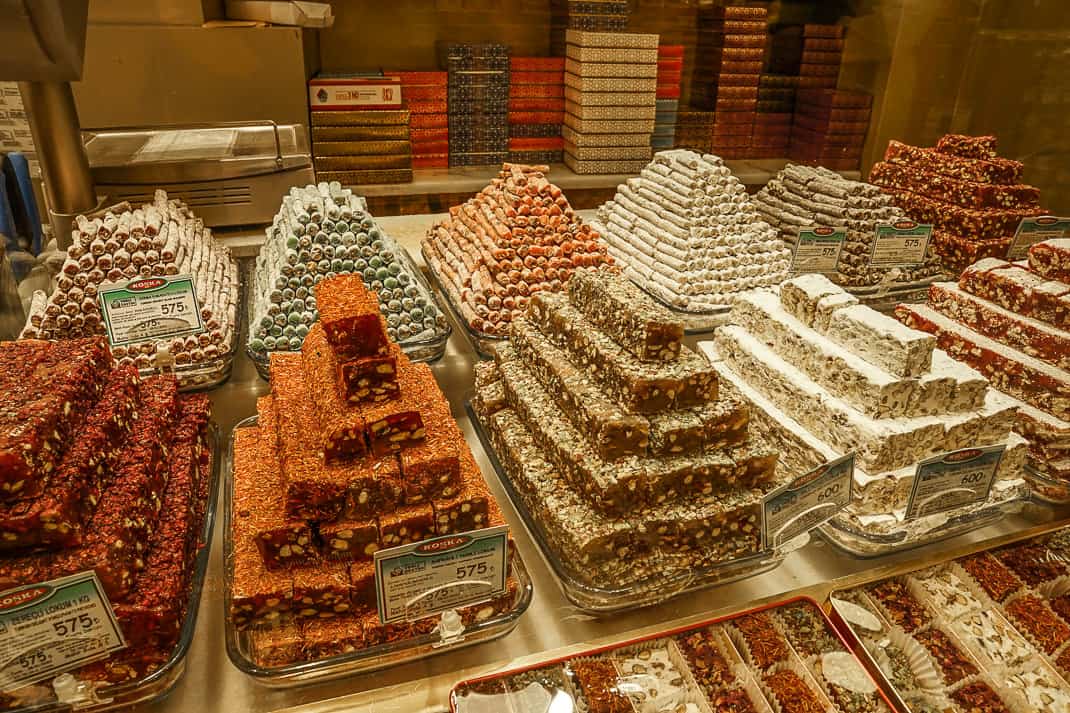
(This is the second of a four-part series on Istanbul. Today: Turkish cuisine.)
ISTANBUL – About the only food that has been sold as much worldwide as the McDonald’s hamburger must be the kabob. Maybe they’ve sold 300 billion, too. Every city I’ve visited around the world has a kabob shop. As immigrants from the Middle East spread their wings, they’ve found every country has an appetite for slow roasting meats on a spit.
I found kabob heaven.
Turkey is its birthplace and two weeks ago was my birthday. I was in search of the perfect kabob and came to the right Istanbul neighborhood. We knew when we arrived in Beyoglu. We walked down the bustling pedestrian boulevard of Istiklal Caddesi and came across a lone red caboose, seemingly placed by time warp from the 19th century.
It’s actually Istanbul’s oldest tram, resurrected in 1990 when the city turned Istiklal Caddesi into a pedestrian zone. It plugs along past Beyoglu’s live-music halls, outdoor bars, odd boutiques and hip hotels.
In Beyoglu you don’t see many hints of Turkey’s massive economic crisis. It’s still where you go for a night on the town, including arguably the best collection of restaurants in the city. They’re scattered around the narrow streets that jut off the main boulevards, all connected by a steep cable car that connects the ‘hood with the port on the Strait of Bosphorus.
General Yazgan Sok is one of those streets. Too narrow for even a tram, it’s lined with bars and restaurants sporting outdoor tables empty in the 40-degree March weather. Antiochia, which I saw ranked among the best restaurants in the city, has a small sign beckoning customers up a narrow staircase.

Normally, kabobs are what you get when you’re hungry and in a hurry. They are Middle Eastern fast food, a much healthier version of the American hamburger and not slow death like a Big Mac. But in Turkey, kabobs can be transformed into haute cuisine. The kabob is the star of the Turkish kitchen which has more variety than the world’s kabob shops could possibly display.
Turkey is big on soups, leavened bread, fish, rice pilaf, cold vegetable hors d’oeuvres called mezes. It also has the best baklava pastry I’ve ever had and a lethally addicted, light, sugary gel snack called Turkish Delight which I’m munching on as I write this.
This is where many dishes around the Middle East and the old Eastern Europe originated. When the Ottoman Empire ruled this giant swath of Earth bridging Asia and Europe from the 13th to 20th century, their foods spread to every conquered land. Greece, the Balkan countries, all through the Arabian Gulf and stretching to Central Asia, you can see connections with the cuisines. The baklava I have every summer on the Greek island of Skopelos originated in Turkey.
But the kabob (spelled kebab in Turkish) is the big cheese. It originated from Erzurum Province in Eastern Turkey. Kabob can be found as far back as 18th century Ottoman travel books. Turkey lists 110 different kinds of kabobs and can consist of everything from lamb to beef to chicken to vegetables. The only requirement is they must be grilled on a vertical spit.

Antiochia
When we ascended the stairs at Antiochia we immediately saw a huge, brick oven with meat grilling on skewers the length of a sultan’s executioner sword. Brick walls form arches connecting dimly lit rooms. Only 16 years old, Antiochia is named for Antioch, the ancient name of what is now Antakya, in Turkey’s Hatay Province.
The restaurant’s bubbly atmosphere masked the sad reality of today’s Antakya, lying half in rubble from the Feb. 6 earthquake. Before the tragedy, the region known as Antiochia was more famous for having the best beef in the country.
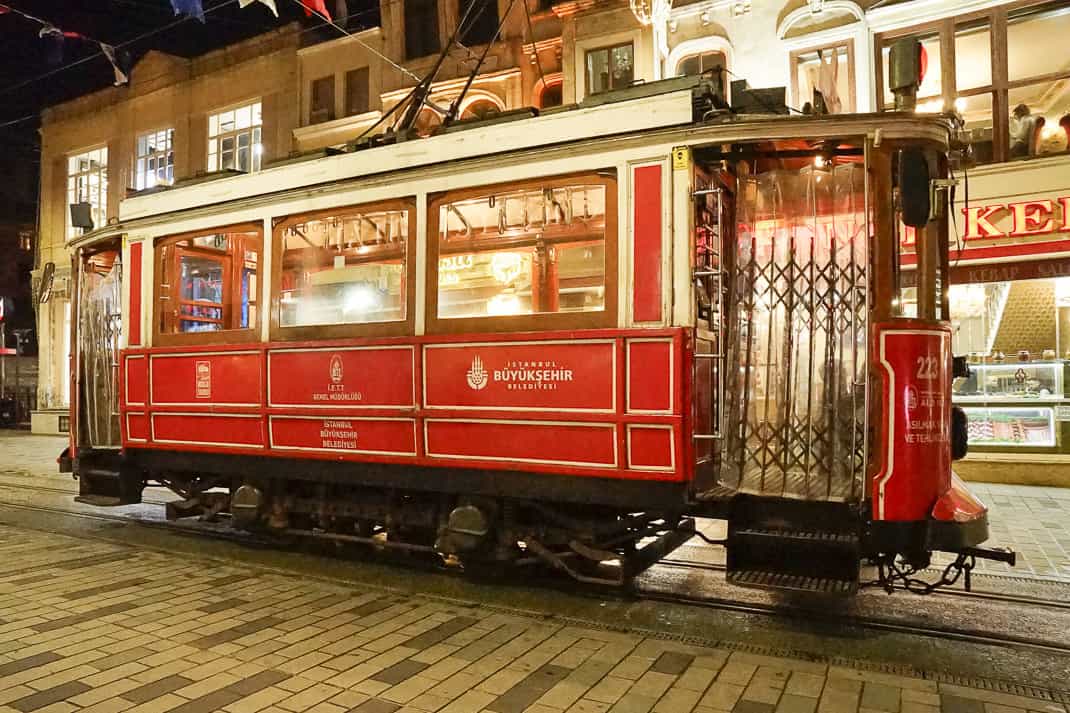
The owner, a tall, enthusiastic man named Suleyman Gulum, comes from Antiochia and proudly told us the cattle are all natural, all live outdoors and eat natural feed, such as thyme. The beef is as natural as you’ll find.
“The meat don’t need too much sauce,” he said. “You don’t need salt. You don’t need butter. You don’t need anything. You need good meat, good preparing and good cook.”
I asked what separates Turkish cuisine from other Middle Eastern diets.
“The first is we are not using too much spice,” he said. “Second, we have very good balance between the ingredients. And the third, we are not making something that we like. We are making something that the people like.”
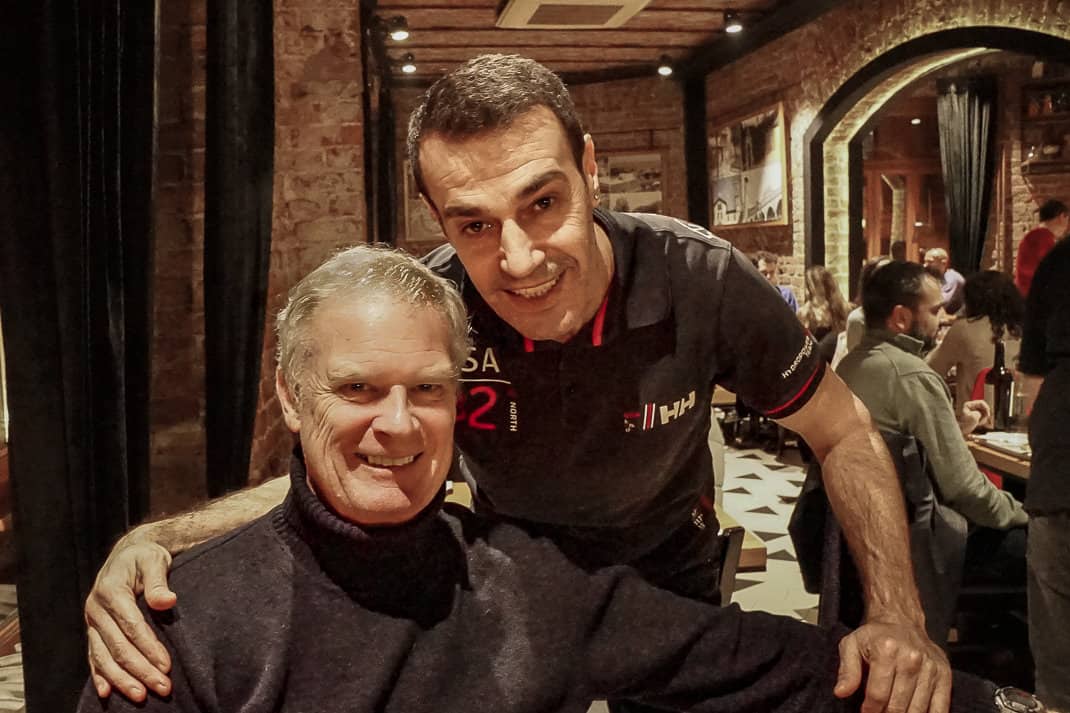
He was right. I ordered the Antiochia Sis Meat. It’s a shish kabob without the skewer. It came out in seven fat, juicy chunks of beef with a small tabbouleh salad, another Turkish staple consisting of tomatoes, bulgur wheat, parsley, green onions, olive oil and lemon juice.
It came with a simit, a sesame bread ring that oddly went great with an accompanying bowl of cumin powder. Along with a rich glass of Okuzgozu, Turkey’s most popular wine, it was the perfect birthday meal.

Deraliye
Keep in mind, Istanbul is very touristy, particularly where we stayed. Sultanahmet is where you find all the main sites, from Alya Sofia to the Blue Mosque to the Topkapi Palace. Sultanahmet is heavy on history and Yankee ball caps and light on authentic restaurants.
One night we were in search of another restaurant highly recommended online and found ourselves in the biggest tourist trap east of Disneyland Paris. Ticarethane Sokak is a short alley with glittery, high-end restaurants on both sides. As we walked past, barkers stood holding menus in five languages (I think I spotted one in Khmer) trying to lure us in pitch-perfect English. I remember experiencing this outside strip joints in Bangkok.
I reluctantly entered Deraliye and didn’t see a single diner who could pass for Turkish. However, the restaurant was beautiful. Airy and artfully decorated with matching table settings, it featured stained-glass windows and chrome and glass chandeliers hanging from the ceiling. Still, I had to ask the waiter.
“What percent of your customers are tourists?”
“Ninety-five percent,” he answered as if he’s asked that every night.
It was expensive and I dreaded the food which I imagined being served by Whirling Dervishes. I nearly convinced Marina, my girlfriend, photographer and fellow discerning traveler, to leave. However, I’ve learned not to judge a restaurant by its trappings or even its barkers. Plus, I’m not rude.
I’m glad I stayed.
Deraliye advertises itself as serving meals once dished up at the nearby Ottoman palaces. That figures. I could walk outside and hit Aya Sofya with a bread ring. I ordered the pistachio kabob and it was definitely fit for royalty. It was a long roll of grilled, seasoned beef sprinkled with pistachio pieces on a piece of filo bread. Accompanied with a pile of rice pilaf and a glass of Okuzgozu, it was filling, delicious and so lean it felt like health food. Marina’s excellent seabass was right out of the nearby Marmara Sea.
I guess tourists aren’t always wrong.

Guvenc Konyali
Going to the other extreme, one night we went to a prototype local diner. Guvenc Konyali is off the well-beaten path of Hocapasa Sokak, a narrow strip of outdoor restaurants packed every night. Guvenc Koyali draws its cuisine from the Konya region of Central Turkey, featuring sour soup and a special flatbread called etli ekmek (bread with meat).
One step above a dive, it has three levels, all of them crowded with Turks. Blue and white tile covered the walls. It sported few decorations, let alone chandeliers. This place is for serious Turkish eating.
Except for a French couple nearby, we were the only Westerners. Female diners wore headscarves, which are rare in Istanbul.
I ordered the etli ekmek üzeri peynirli. That’s lamb and cheese flatbread and looked appetizing on the plates flying by us. I thought, This is delicious. This is authentic. This is Turkey.
This is crap.
Picture the greasiest pizza you’ve ever had, double it and you have etli ekmek uzeri peynirli. It came in eight big diamond wedges and looked like Roman pizza with the crisp crust. Instead, it was soggy. Grease overwhelmed the taste. I filled up fast. I ate only half and still felt a need to wring out my large intestine.
Marina’s cheese etli ekmek was slightly better, slightly less greasy. Note to self: Never order lamb on anything but a plain plate.
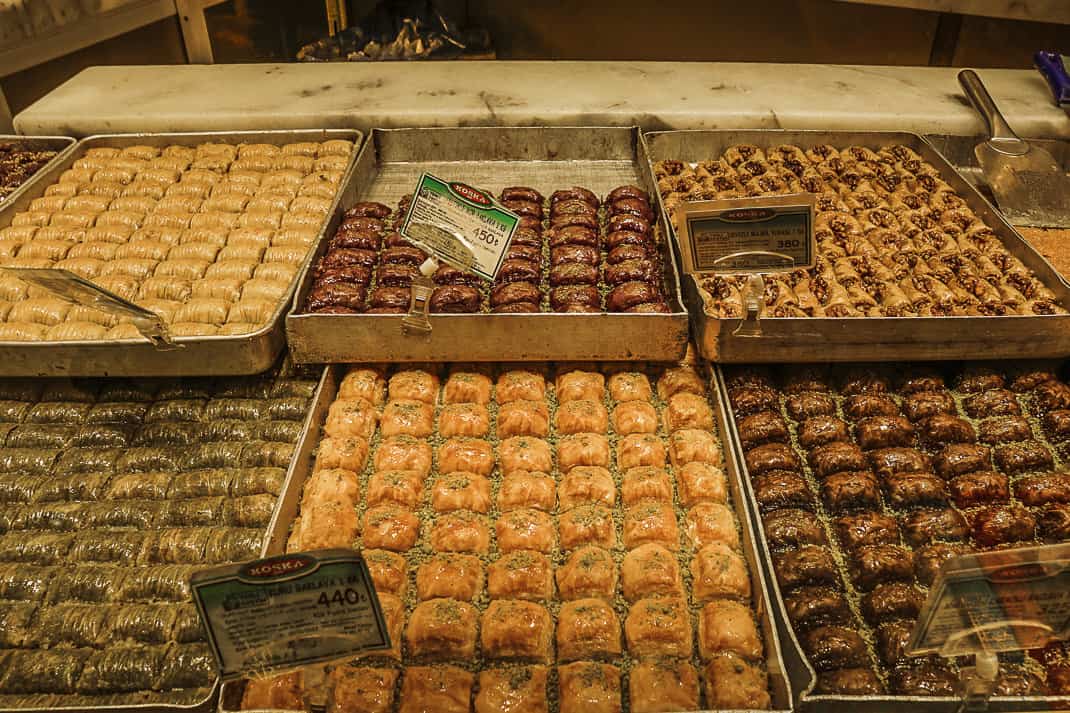
Dessert
The best thing about eating in Turkey is no matter how disappointed you may be with a meal, you always have baklava to look forward to. Baklava is the dessert de rigueur of this region of the world. Every night we indulged. This is the one group of hawkers who lured us in, waving little mini rolls filled with nuts inside phyllo dough and covered in syrup.
Baklava is one of the draws that takes us to Greece every August. The baklava in Istanbul is better. In Greece they use chopped nuts, butter and phyllo dough. The Turks use fewer nuts but different nuts: walnuts, pistachios, almonds. And they use more syrup making it sweeter.
Baklava began during the Ottoman Empire and they brought it to Hungary in the 16th century from where it spread. It is the common dessert during Ramadan, the Muslim fasting month.
Because what is better when you’re starving than nuts rolled up in phyllo dough covered in syrup?
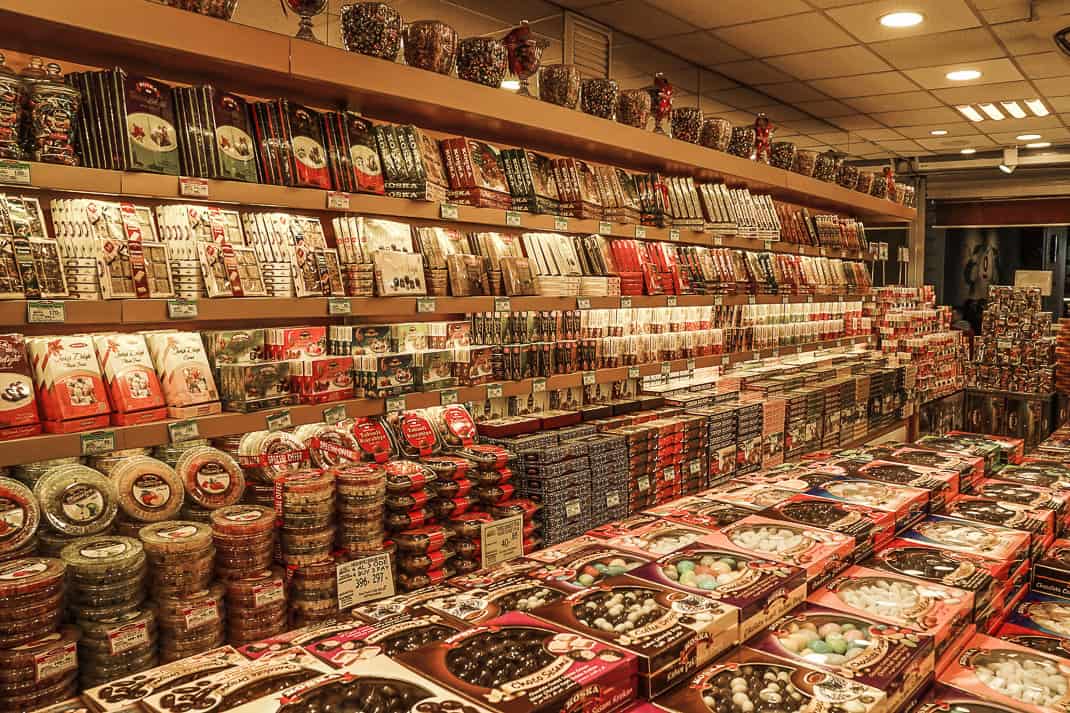
Meanwhile, here’s a dessert that makes no sense and sounds 100 percent deadly: Combine cornstarch with water and cover it in powdered sugar. That’s essentially the addicting sweet snack called Turkish Delight. They come in bite-sized cubes and are sold everywhere, from groceries to, I’m sure, gas stations.
They come with little bits of dates, pistachios, hazelnuts or walnuts. They’re flavored with rosemary, orange or lemon. The most traditional is pomegranate, of which Turkey is one of the world’s leading producers. Turkish Delight is dirt cheap, sweet and is the perfect munchy while watching TV, reading or writing about Turkish Delight.
Known in Turkey as lokum, Turkish Delight also goes back to the Ottoman Empire in the 18th century. According to a disputed story, when a man named Bekir Efendi moved from the Northern Turkey province of Kastamonu to Constantinople (today’s Istanbul), he opened a lokum shop in 1777. When cornstarch was created in the mid-19th century, it was added to the original recipe. Cornstarch is what gives it its gummy, soft texture.
Ottoman sultans became so addicted to the sweet that they made Efendi the palace’s chief confectioner, a title the family carried until the end of the Ottoman Empire in 1920. The original store, Haci Bekir, is the oldest company in Turkey and still operating in the Eminonu neighborhood near the Bosphorus.
Hungry yet? Go have a kabob. There’s a kabob shop somewhere near you.
(Next Tuesday: The cats of Istanbul.)
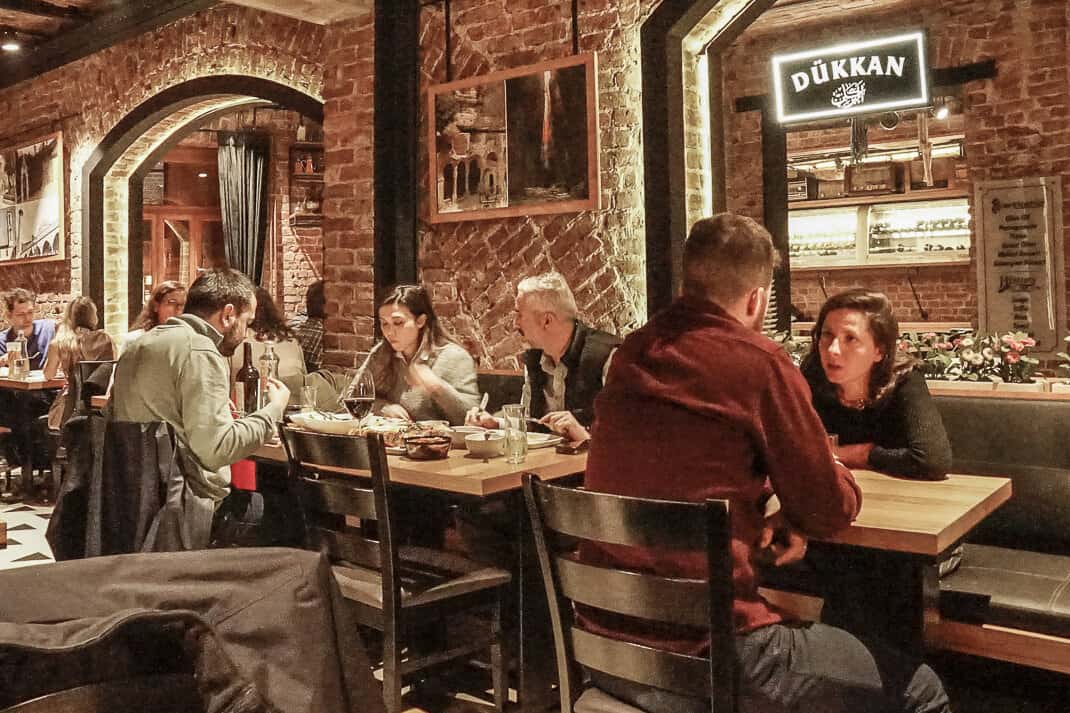
If you’re thinking of going …
How to get there: We paid €338 for two round-trip flights on Air Pegasus from Rome.
Where to stay: Artefes Hotel, Kucuk Ayasofya Cad, Cayiroglu Sk. No. 17, 90-212-516-5863, www.artefes.com, info@artefes.com. Clean, quiet, simple three-star hotel with very helpful, English-speaking staff. I paid €289 for four nights.
Where to eat: Antiochia, Asmali Mescit Mah. General Yazgan Sok. 3/C, 90-212-244-0820, 90-532-455-7922, www.antiochiaconcept.com, info@antiochiaconcept.com, noon-midnight Monday-Saturday. Fine dining restaurant specializing in the meats of the southeast Turkey region of Antiochia. I paid €45 for appetizers, main course, dessert and wine.
Deraliye, Ticarethane Sokak 10, 90-212-520-7778, https://deraliyerestaurant.com/, info@deraliyerestaurant.com, 11:30 a.m.-11:30 p.m. Main meat dishes starting at €30.
When to go: July is hot and humid with average highs of 85 and lows of 69. January is the coldest at 48-37. At the end of March it was 60-40 with rain three of our four days.
For more information: Ministry of Culture & Tourism. Offices at Istanbul Airport, Sabiha Gokcen Airport, Sirkeci Train Station and the Hippodrome in Sultanahmet, 90-212-511-5888, 9:30 a.m.-6 p.m. mid April-September, 9 a.m.-5:30 p.m. October-mid April.


April 11, 2023 @ 2:06 pm
Happy belated birthday, John! My mouth started watering at the sight of the pistachio kebab! Turkey has been on my proverbial Bucket List for a while now. Such a big beautiful world, so little time! Thanks again for a great read. Cooking is my first love!
April 11, 2023 @ 5:04 pm
Thanks, Cristina. I ate half a box of Turkish Delight while I wrote it.
April 11, 2023 @ 5:12 pm
Enjoyed reading this. I think some of the best traveling food I’ve had – and I’ve had a lot- may have been in Turkey.
April 12, 2023 @ 11:32 am
Thanks, Michael. I’ve been told by expats that Turkish cuisine gets old after a while. The variety isn’t like you get in Italy or U.S. But at least the staples are good.
April 11, 2023 @ 8:19 pm
Oh John, you lucky boy – yum yum !! Thank you for the delish post; I’d really like to return to Turkey one day if for no other reason then to gorge on baklava.
April 12, 2023 @ 11:31 am
Yes, Caryl, I was surprised how good the baklava is. I’m a huge fan of all the baklava I had in Greece. But Istanbul’s topped it.
April 12, 2023 @ 4:51 am
allora…. what is your favorite kabob shop a Roma?
April 12, 2023 @ 11:30 am
I really don’t have a favorite kabob shop. I love Mandaloun, a Lebanese place off Via Veneto, but that’s a high-end restaurant with kabob. I like Mezes up the street from me in Monteverde Nuovo.
April 12, 2023 @ 10:58 am
Happy birthday! Sounds like a great way to celebrate! Now I’m hungry!!!!! Need baklava now!
April 12, 2023 @ 11:28 am
Thanks, Carol. I got hungry writing it.
April 13, 2023 @ 10:06 pm
Sorry you missed Hamdi –
Fabulous pistachio kufta – made with mixed lamb & veal, and pistachios of course.
April 14, 2023 @ 8:37 am
Thanks. I’ll try it next trip.